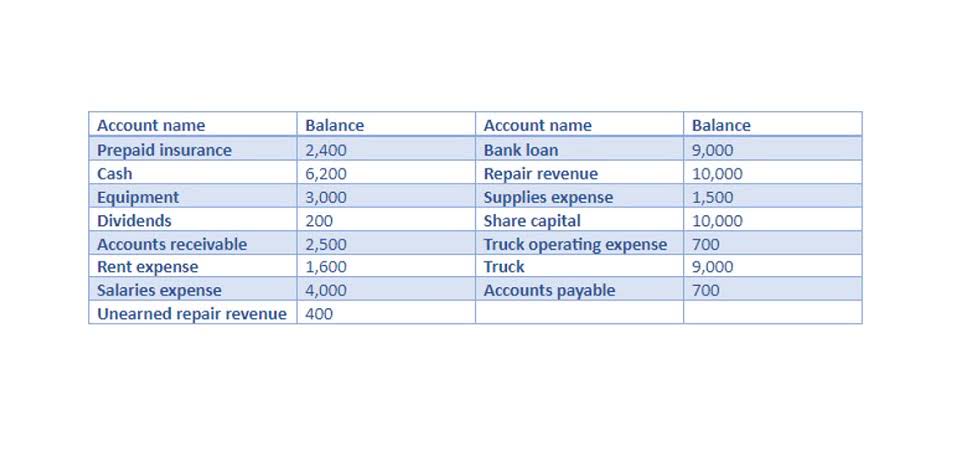Content
- Impact of a Possible Return to Amortization
- How to calculate amortization expense
- Example of Amortization
- What Is the Meaning of Amortization?
- Find the Best Tutors
- Why Is Depreciation Estimated?
- CPA Financial Accounting and Reporting (FAR) : Depreciation and Amortization
- Amortization definition for accounting

The IRS has schedules that dictate the total number of years in which to expense tangible and intangible assets for tax purposes. First, amortization is used in the process of paying off debt through regular principal and interest payments over time. An amortization schedule is used to reduce the current balance on a loan—for example, a mortgage or a car loan—through installment payments. The advantage of accelerated amortization for tax purposes lies in the deferment of taxes rather than in their reduction. A financial problem may result later from the absence of any deduction in the normal income taxes for depreciation.

If an intangible asset has an unlimited life then a yearly impairment test is done, which may result in a reduction of its book value. Patriot’s online accounting software is easy-to-use and made for the non-accountant. Many examples of amortization in business relate to intellectual property, such as patents and copyrights. Accounting and tax rules provide guidance to accountants on how to account for the depreciation of the assets over time.
Impact of a Possible Return to Amortization
Existing amortization schedules and amortization journal entries do not change. Determining the capitalized cost of an intangible asset can be the trickiest part of the calculation.
Depreciation of some fixed assets can be done on an accelerated basis, meaning that a larger portion of the asset’s value is expensed in the early years of the asset’s life. The second is used in the context of business accounting and is the act of spreading the cost of an expensive and long-lived item over many periods.
What type of account is amortization in Quickbooks?
To handle the amortization of intangible assets, you can create a journal entry to deplete it. To record this transaction, you would normally have an expense account setup to track amortization, along with a sub-account attached to your intangibles asset account for the tracking of the accumulated amortization.
Amortizing lets you write off the cost of an item over the duration of the asset’s estimated useful life. If an intangible asset has an indefinite lifespan, it cannot be amortized (e.g., goodwill).
How to calculate amortization expense
In fact, the two non-cash add-backs are typically grouped together in one line item, termed “D&A”. Companies are permitted to designate values to their intangible assets once the value is readily observable in the market – e.g. an acquisition where the price paid can be verified. The objective of this project is to consider whether the proportional amortization method of accounting should be expanded to investments in tax credit structures beyond low-income housing tax credit investments.

A business will calculate these expense amounts in order to use them as a tax deduction and reduce its tax liability. The key differences between the three methods involve the type of asset being expensed. A bond is a fixed-income investment that represents a loan made by an investor to a borrower, ususally corporate or governmental. Investopedia requires writers to use primary sources to support their work.
Example of Amortization
You can view the transcript for “How to account for intangible assets, including amortization ” here . You must use depreciation to allocate the cost of tangible items over time. Likewise, you must use amortization to spread the cost of an intangible asset out in your books. Entrepreneurs often incur startup costs to organize a business before it begins operating. These startup https://www.bookstime.com/ costs may include legal and consulting fees as well as marketing expenses and are an example of an area where there’s a significant difference between book amortization and tax amortization. Loan amortization, a separate concept used in both the business and consumer worlds, refers to how loan repayments are divided between interest charges and reducing outstanding principal.
An amortization schedule determines the distribution of payments of a loan into cash flow installments. As opposed to other models, the amortization model comprises both the interest and the principal. In accounting, amortization refers to the assignment of a balance sheet item as either revenue or expense.
What Is the Meaning of Amortization?
In general, the word amortization means to systematically reduce a balance over time. In accounting, amortization is conceptually similar to the depreciation of a plant asset or the depletion of a natural resource. If an intangible asset has an unlimited life, then it is still subject to a periodic impairment test, which may result in a reduction of its book value. The two basic forms of depletion allowance are percentage depletion and cost depletion. The percentage depletion method allows a business to assign a fixed percentage of depletion to the gross income received from extracting natural resources. The cost depletion method takes into account the basis of the property, the total recoverable reserves, and the number of units sold.
- News of the sale caused two other inventors to challenge the application of the patent.
- If you pay $1,000 of the principal every year, $1,000 of the loan has amortized each year.
- The word amortization carries a double meaning, so it is important to note the context in which you are using it.
- A business will calculate these expense amounts in order to use them as a tax deduction and reduce its tax liability.
- Like amortization, you can write off an expense over a longer time period to reduce your taxable income.
- However, because amortization is a non-cash expense, it’s not included in a company’s cash flow statement or in some profit metrics, such as earnings before interest, taxes, depreciation and amortization .
- Entrepreneurs often incur startup costs to organize a business before it begins operating.
The costs incurred with establishing and protecting patent rights would generally be amortized over 17 years. The goodwill recorded in connection with an acquisition of a subsidiary could be amortized over as long as 40 years past the author’s death, and should also be limited to 40 years under accounting rules.
Find the Best Tutors
Amortization is typically expensed on a straight-line basis, meaning the same amount is expensed in each period over the asset’s useful lifecycle. Assets expensed using the amortization method usually don’t have any resale or salvage value, unlike with depreciation. If the repayment model for a loan is “fully amortized”, then the last payment pays off all remaining principal and interest on the loan. If the repayment model on a loan is not fully amortized, then the last payment due may be a large balloon payment of all remaining principal and interest. If the borrower lacks the funds or assets to immediately make that payment, or adequate credit to refinance the balance into a new loan, the borrower may end up in default. Goodwill – Goodwill captures the excess of the purchase price over the fair market value of an acquired company’s net identifiable assets – goodwill for public companies should NOT be amortized . Deferred expenses must be posted to a deferral account until they are shifted to an expense account by amortization journal entries based on the amortization schedule.
How do you calculate amortization expense?
Subtract the residual value of the asset from its original value. Divide that number by the asset's lifespan. The result is the amount you can amortize each year.
These assets benefit the company for many future years, so it would be improper to expense them immediately when they are purchase. Instead, intangible assets are capitalized when purchased and reported on the balance sheet as a non-current asset. In order to agree with the matching principle, costs are allocated to these assets over the course of their useful life. For tax reporting purposes in anasset sale/338, most intangible assets are required to be amortized across a 15-year time horizon. But there are numerous exceptions to the 15-year rule, and private companies can opt to amortize goodwill. To calculate the amortization of an intangible asset, you must first determine its useful life. The useful life is the amount of time the asset is expected to enhance the revenues of the business.
Why Is Depreciation Estimated?
Then subtract the interest from the payment value to get the principal. You can use the amortization schedule formula to calculate the payment for each period. To calculate the period interest rate you divide the annual percentage rate by the number of payments in a year. In the example above, the loan is paid on a monthly basis over ten years.
- Under United States generally accepted accounting principles , the primary guidance is contained in FAS 142.
- For example, a company benefits from the use of a long-term asset over a number of years.
- The staff has prepared this summary for information purposes only.
- In some cases, failing to include amortization on your balance sheet may constitute fraud, which is why it’s extremely important to stay on top of amortization in accounting.
- However, the term has several different meanings depending on the context of its use.
For intangible assets, knowing the exact starting cost isn’t always easy. You may need a small business accountant or legal professional to help you. One notable difference between book and amortization is the treatment of goodwill that’s obtained as part of an asset acquisition. There are a wide range of accounting formulas and concepts that you’ll need to get to grips with as a small business owner, one of which is amortization.
CPA Financial Accounting and Reporting (FAR) : Depreciation and Amortization
The value of goodwill is calculated by first subtracting the purchased company’s liabilities from the fair market value of its assets and then subtracting this result from the purchase price of the company. In lending, amortization is the distribution of loan repayments into multiple cash flow instalments, as determined by an amortization schedule. Unlike other repayment models, each repayment installment consists of both principal and interest, and sometimes fees if they are not paid at origination or closing. Amortization is chiefly used in loan repayments and in sinking funds. Payments are divided into equal amounts for the duration of the loan, making it the simplest repayment model. A greater amount of the payment is applied to interest at the beginning of the amortization schedule, while more money is applied to principal at the end.
- Over time, after the series of payments, the borrower gradually reduces the outstanding principal.
- Assets expensed using the amortization method usually don’t have any resale or salvage value, unlike with depreciation.
- It represents reduction in value of the intangible asset due to usage or obsolescence.
- In the dialog that opens, browse to the XML file that you exported from ToolBox CS or TValue, and then click the Open button.
- In short, it describes the mechanism by which you will pay off the principal and interest of a loan, in full, by bundling them into a single monthly payment.
- The amount of principal due in a given month is the total monthly payment minus the interest payment for that month.
GAAP is written and maintained by the Financial Accounting Standards Board, a private organization of accounting experts. The relevant section of GAAP related to amortizing intangibles is the Statement of Financial Accounting Standards Number 142, Goodwill and Other Intangible Assets. Save money without sacrificing features you need for your business.
For the ROA comparison, the change for the total sample is an average decrease of 2.6%, from an average 6.2% to an average 2.6% . Likewise, for the EPS comparison, the change for the total sample is an average decrease of $1.20 per share, from an average $3.84 per share to $2.64 per share . Determining how to account for the goodwill found in business combinations has been a hotly debated topic for decades. Standards setters have promulgated numerous different approaches over time, and in the past decade FASB has released several pieces of guidance aimed at streamlining the current impairment model. The authors explain how a new proposal has put the spotlight back on the subject and analyze the potential impact a return of the amortization method might have on financial reporting. Some fixed assets can be depreciated at an accelerated rate, meaning a larger portion of the asset’s value is expensed in the early years of the assets’ lifecycle. A caveat is that under GAAP, goodwill amortization is permissible for private companies.
Depreciation is the expensing of a fixed asset over its useful life. Amortization is the practice of spreading an intangible asset’s cost Amortization Accounting over that asset’s useful life. Amortization and depreciation are two methods of calculating the value for business assets over time.

The debit balances in some of the intangible asset accounts will be amortized to expense over the estimated life of the intangible asset. In short, it describes the mechanism by which you will pay off the principal and interest of a loan, in full, by bundling them into a single monthly payment. This is accomplished with an amortization schedule, which itemizes the starting balance of a loan and reduces it via installment payments. Amortization is the accounting practice of spreading the cost of an intangible asset over its useful life. Intangible assets are not physical in nature but they are, nonetheless, assets of value.
Company ABZ Inc. paid an outside inventor $180,000 for the exclusive rights to a solar panel she developed. The customary method for amortization is the straight-line method. Harold Averkamp has worked as a university accounting instructor, accountant, and consultant for more than 25 years. He is the sole author of all the materials on AccountingCoach.com. Amortization is a fundamental concept of accounting; learn more with our Free Accounting Fundamentals Course. Simple interest is a quick method of calculating the interest charge on a loan.

